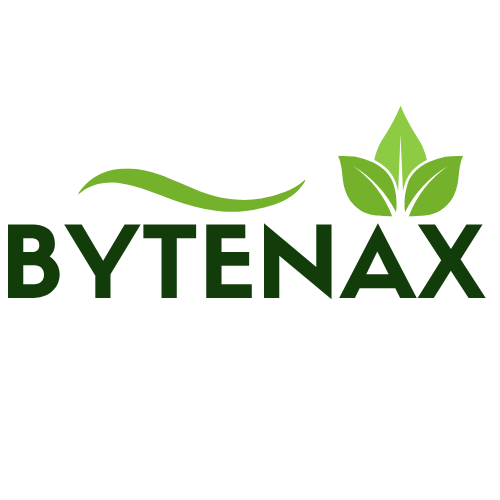Anúncios
What if this year changes the rules for how your business, investors, and communities handle climate risk?
This report maps the key shifts you need to know for 2025. You’ll get a clear view of why the decade feels decisive, where emissions and finance stand, and which policy signals—like ESRS—will reshape reporting and capital flows.
We focus on practical moves you can take in energy, nature, and reporting. Expect business-ready examples—from CCUS hubs to green hydrogen—that show timing, scale, and what makes projects bankable in the U.S.
Along the way, we flag the main challenges you’ll meet, such as permitting, data gaps, and geopolitical risk, and point to near-term opportunities for finance and capital. Read on to set priorities and find quick wins for your plans.
Introduction: sustainability trends 2025 shaping policy, markets, and everyday choices
Sustainability trends 2025 will shape the rules your team uses to set goals, secure finance, and manage day-to-day operations.
Anúncios
The political backdrop in the U.S. could change permitting and environmental reviews. Global attention is shifting toward COP30, where China, Brazil, and Europe will play larger roles.
Context and relevance for the year ahead
Large-company reporting under ESRS starts this year. That raises the bar for data and for how investors judge credible claims. Forrester and Workiva note many firms plan voluntary alignment with CSRD/ISSB—about 68% intend to adopt parts of CSRD.
Why your organization’s strategy should evolve now
The climate backdrop is urgent, but you have practical levers. Early action reduces regulatory risks, improves access to capital, and helps operational resilience in U.S. industries like food and hospitality.
Anúncios
How this report is structured to guide your next steps
This report walks you through geopolitics, policy signals, finance flows, corporate accountability, digital solutions, and energy and technology moves. Each section offers clear steps and simple examples—such as cold-chain efficiency or lower-impact packaging—that align with culinary culture without making health claims.
For a concise view of what businesses must watch, see this briefing.
Sustainability trends 2025: the decisive year between ambition and execution
Momentum for climate action faces new tests from conflict and policy shifts, so your plans should be nimble and focused.
Geopolitics and climate: maintaining momentum amid uncertainty
Conflicts in Gaza, Ukraine, and Sudan are reordering cooperation. At the same time, global emissions likely rose in 2024, raising the urgency for credible action.
Expect uneven attention from governments and shifting policy windows. Scenario planning and flexible policies help you protect progress when political focus moves.
From COP29 to COP30: what new goals mean for your plans
COP29 set the NCQG to reach $300B annually by 2035 and pushed the Loss and Damage Fund toward 2025 operations. Those signals point to more finance over time and sharper equity rules.
- Prepare for updated NDCs ahead of COP30; stronger targets will change demand for efficiency and low-emissions logistics.
- Translate uncertainty into practical moves: lock in clean power contracts, diversify suppliers, and upgrade data systems for new reporting policies.
- Use short sprints—90-day projects to cut Scope 2 via green tariffs or RECs—while building longer-term Scope 3 collaboration.
Policy signals in the United States and beyond: continuity, shifts, and real-world impacts
Policy moves this year will reshape how projects clear permits, attract capital, and enter markets. You should watch how these signals translate into operational timelines and procurement choices.
U.S. climate and energy policy outlook
The administration is signaling changes to permitting and environmental reviews. Expect reform efforts to shorten some approval steps and to shift timelines for project development.
Practical take:* map your development pipeline and update vendor timelines so you can react when reviews speed up or slow down.
Europe’s pivot on reporting and industrial policy
ESRS disclosures are mandatory for many firms this fiscal year. That raises pressure on multinationals to show double materiality and supply chain transparency.
Action: pre-qualify suppliers for reporting attributes and map exposure to EU rules if you sell into that market.
Global stage and shifting influence
China, Brazil, and Europe will shape COP30 conversations. Those signals can alter commodity prices and the demand for low-carbon solutions.
- IRA incentives still steer capital allocation across economies; stress-test your goals under a few policy scenarios.
- LNG exports may expand as data center demand grows—plan for related market price dynamics in your power procurement.
Bottom line: turn policy signals into specific tasks—secure interconnection slots, update procurement criteria, and align legal, finance, and procurement teams—so you limit risks and accelerate implementation.
Climate finance redistribution: NCQG, Loss and Damage, and equitable transition
Climate finance is shifting fast, and your projects should be ready to tap new public and private channels.
The New Collective Quantified Goal (NCQG) sets a directional target: $300B per year by 2035, building on the $100B baseline reached in 2022. That signals bigger public flows, but it still falls short of the trillions needed to scale major solutions.
The $300B goal: scale, gaps, and timelines
Expect phased increases and pilot programs that favor bankable projects. Practical point: design deals that can blend public grants with private finance to close early gaps.
Loss and Damage Fund in 2025
The fund aims to be operational this year but sits outside the NCQG. Watch eligibility rules, governance, and disbursement speed—these will shape where recovery funding lands.
Private capital and nature-positive execution
Investors want verifiable outcomes: watershed restoration, regenerative agriculture linked to commodity chains, and clear MRV. For U.S. actors, align project docs early so multilateral funding and private investments can combine to de-risk deployment.
“Prepare measurement, reporting, and verification up front to qualify for co-finance and reduce delivery risks.”
- Governments will balance mitigation and adaptation choices—plan for both.
- Resource allocation debates can shift timelines; keep contracts flexible.
- Debt-for-nature swaps and blended funds may improve access in Africa and other markets.
Corporate accountability rises: double materiality, assurance, and voluntary adoption
More companies are choosing tougher reporting frameworks to show clear environmental and social performance to the market.
ESRS and ISSB elements are being adopted voluntarily by many firms. Forrester and Workiva find that 68% of companies not required plan to adopt parts of CSRD and 61% plan partial ISSB adoption. You may find adoption reduces rework when rules hit your markets.
Investor expectations: telling a credible value story
Investors want specificity. Link strategy, risks, and opportunities to financial performance and avoid vague claims.
Practical tip: pilot supplier engagement in foodtech—ask packers for verified emissions data and prefer packaging with clear supply-chain proof.
Assured integrated reporting: building trust with better data
76% of respondents view assured integrated reporting as crucial. Start with limited assurance and plan for reasonable assurance as your data matures.
“Prepare measurement, reporting, and verification up front to qualify for co-finance and reduce delivery risks.”
Operational hurdles and quick wins
Many businesses struggle with trustworthy data (57%) and expect current tools to fail in 18 months (91%). Close gaps by standardizing emission factors, documenting methodologies, and setting management controls across operations.
- Build cross-functional teams: finance, procurement, IT, and legal.
- Pilot projects in packaging or supplier scorecards to show measurable returns.
- Choose platforms that support double materiality and audit trails to scale your management practices.
Bottom line: use experience from EU first movers, keep guidance practical, and consult reporting or legal professionals for technical or compliance questions.
AI, data centers, and digital sustainability: managing benefits and burdens
Your data stack can deliver concrete gains for grid flexibility and logistics, but it also brings new resource burdens.

Where AI can help: grid efficiency, supply chains, and monitoring
Use cases are practical today: predict demand to ease grid strain, optimize routes to cut fuel and time, and monitor habitats with satellites and sensors for better conservation.
Example: AI routing in cold chains can reduce spoilage and shrink procurement waste.
What to watch: energy, water, and low-resource AI standards
Training large models consumes significant energy and water and draws on critical minerals. Assess the full resource footprint of your compute before scaling.
- Siting workloads near clean energy or buying time-matched renewable power are workable solutions.
- Adopt low-resource model architectures and schedule heavy compute during off-peak hours.
- Map operational risks from outages, chip shortages, or power limits; build redundancy and flexible job windows.
“Balance efficiency gains with caps on total use to avoid rebound effects.”
Bottom line: apply these technologies where they deliver real efficiency and monitor the resource trade-offs so your operations support lasting climate outcomes.
Energy transition in motion: renewable buildout, nuclear, and hydrogen milestones
The power system is shifting fast as electrification and data demand reshape how you plan energy assets.
Practical point: renewable deployment keeps rolling despite policy uncertainty. Data centers and electrified kitchens drive more demand, and that pressure shows up in interconnection queues and local permitting delays.
Renewables growth and grid demand: the push from electrification and data
Expect continued investments in utility-scale solar and wind, paired with storage. Nuclear and green hydrogen are returning to many portfolios; Europe’s first industrial green hydrogen plants signal maturing technologies.
- Rising demand reshapes the power market—plan for grid upgrades and storage when you size projects.
- Use flexible ops (shift noncritical loads) and demand response to lower costs and emissions.
- Look at on-site or community solar, long-term PPAs, and early procurement to manage transformer and labor constraints.
- Measure Scope 2 carefully; where possible, match certificates to hourly generation for real impact.
“Prepare capital and operations to respond to changing load profiles and resource limits.”
Climate tech commercialization: CCUS hubs, hydrogen plants, and beyond
When CCUS hubs and green hydrogen plants reach construction, your procurement and accounting choices change fast.
Northwest Europe’s CCUS hubs are moving from planning into construction, with final investment decisions underway. That shift shows these solutions can serve hard-to-abate industries at industrial scale.
From planning to construction: Northwest Europe’s CCUS hubs
Early hubs will prove capture rates, transport logistics, and storage integrity. Watch how contracts, pricing, and risk allocation evolve in the first wave.
Industrial-scale green hydrogen: first plants coming online
Europe’s first large green hydrogen plants are entering operation. These projects give real data on electrolyser performance and offtake models you can adapt.
- Investors and capital are already targeting carbon removal and monitoring tools; evaluate adjacent technologies for your roadmap.
- For U.S. industries, structure long-term agreements and quantify emissions reductions for reporting and finance.
- Link electrolysis and CCUS to low-carbon power and reuse waste heat or oxygen byproducts to boost project economics.
“Use early commercial projects as templates—copy contract structures that allocate risk clearly and tie payments to verified performance.”
Financing the transition: tax equity, credit transfers, and project bankability
A maturing credit-transfer market is changing how projects attract tax equity and corporate partners.
How it works: hybrid tax equity and credit-transfer deals let companies buy or receive ITC/PTC value without owning the full project. Standardized terms and bigger corporate demand speed execution and unlock capital for large builds.
Tax credit transfer market maturity
Large tax equity investors now favor hybrid structures that combine transferability with some equity protections.
This reduces negotiation time and improves liquidity for developers. Prepare a clean data room with contracts, performance models, and site records to move quickly.
Bankable opportunities and practical tips
Focus on bankable themes: methane abatement at facilities, CCUS retrofits, and green manufacturing that uses domestic content.
- Document eligibility: map ITC/PTC basis, placed-in-service timing, and recapture risks with counsel.
- De-risk deals: secure long-term offtake or contracted revenues and proven EPC partners.
- Leverage data: use monitoring tech for verification to ease post-close management.
“Investors pick projects with clean contracts, clear delivery paths, and audit-ready data.”
Practical takeaway: align your business and capital plans to bankable themes, and build disciplined project management so investors see lower execution risk.
Conclusion
This year compresses policy, finance, and technology signals into choices you can act on now.
You’ve seen how sustainability trends 2025 concentrate climate and reporting signals into practical steps for businesses and companies. Prioritize efforts that build durable capabilities: credible data, assurance-ready practices, and cross-functional initiatives.
Balance near-term moves—clean power procurement and bankable projects—with longer-horizon investments like CCUS or hydrogen. Track NCQG, the Loss and Damage Fund, and COP30 signals so funding and policy improve project economics.
Practical plan: pick three initiatives, set milestones, secure internal sponsors, and review progress quarterly. Explore food culture consciously—favor responsible sourcing and waste reduction—and consult legal, financial, or health professionals for guidance.



